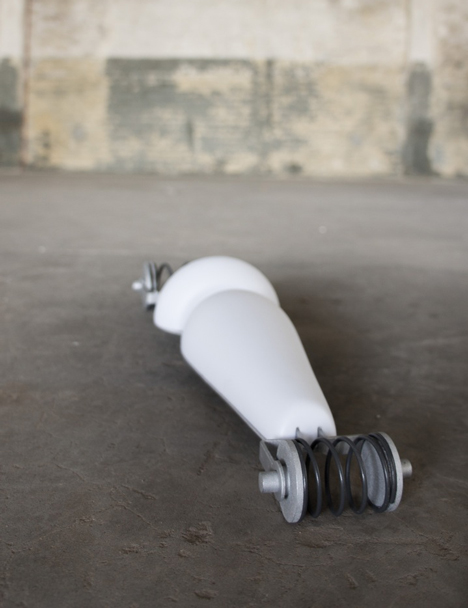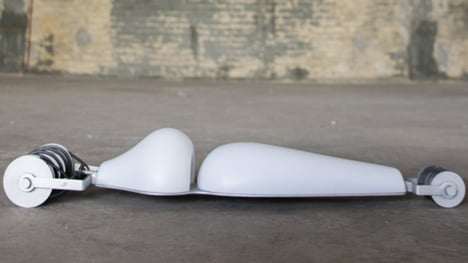Synapse mind-controlled toy car by Alejo Bernal
Dutch Design Week 2013: Design Academy Eindhoven graduate Alejo Bernal wants to help people improve their concentration spans by controlling a toy car with their minds.
To drive the vehicle, users wear an electroencephalography (EEG) headset that measures electrical activity within the neurones of the brain and converts these fluctuations into signals that control the toy car. "As you try to focus, the increased light intensity of the vehicle indicates the level of attention you have reached," explained Bernal. "Once the maximum level is achieved and retained for seven seconds, the vehicle starts moving forward."
Bernal developed his project to help users train themselves in overcoming concentration problems associated with attention deficit disorders. "This project helps users to develop deeper, longer concentration by exercising the brain," the designer told Dezeen. "It is possible for people to train or treat their minds through their own effort, and not necessarily using strong medicines such as ritalin."

His design uses the fluctuating light levels to visualise the level of attention a user achieves in real time and rewards above-average concentration when the car moves. "I call this an empiric neuro-feedback exercise that people can do at home," he says. "The user can't feel anything tactile, but he will be able to visualise the behaviour of the brain."
As part of his research for the project, Bernal visited the Dutch Neurofeedback Institute, where EEG is already used for the treatment of attention disorders, and found that "they tend to use software and digital interfaces as feedback, even-though ADHD patients are the most likely individuals to develop addictions to TV, video games and computers."
"My project is basically a new way of employing the EEG technology in an analog way because from my personal experience, that's more relevant for the people who can actually benefit from this technology," he added.
The working prototype comprises a commercially available headset developed by American firm Neurosky, which has one dry electrode on the forehead and a ground on the earlobe, and the toy car that he developed and designed himself.

"The headsets are available to the public for €100 and I find the accessibility very positive, but at the moment the only way to work with them is by using a computer and performing a digital task or game," he said.
The toy car itself is made of aluminium with a body in semi-transparent acrylic so the lights show through from the inside. "The shape is inspired by a brain synapse," said Bernal. "I wanted to achieve a fragile-looking toy, something you have to take care of that's complex but understandable. At the end of the day it's not a toy but a tool to train your brain."
Bernal has just graduated from the Man and Leisure department at Design Academy Eindhoven and showed his project at the graduation show as part of Dutch Design Week this month.